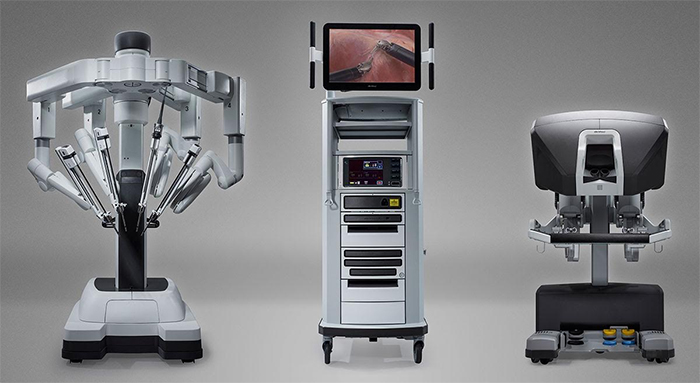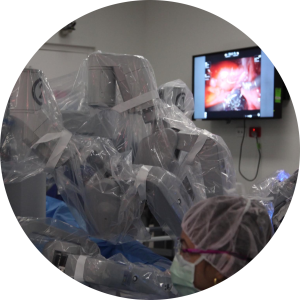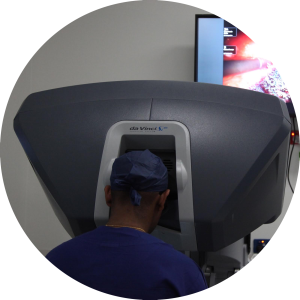ROBOTIC PROSTATE SURGERY
This operation needs specialised training, as the surgeon is unable to “feel” your tissues or organs unlike open surgery. It is only suitable for certain prostate tumours and your surgeon will tell you if you are suitable.
Some of the advantages of robotic surgery include:
- Clinically superior results
- Reduced risk of complications
- Quicker recovery period
- Minimised scarring

ROBOTIC PROSTATE SURGERY
This operation needs specialised training, as the surgeon is unable to “feel” your tissues or organs unlike open surgery. It is only suitable for certain prostate tumours and your surgeon will tell you if you are suitable.
Some of the advantages of robotic surgery include:
- Clinically superior results
- Reduced risk of complications
- Quicker recovery period
- Minimised scarring



ADDITIONAL INFORMATION
- Avoids open surgery and the resulting large scar and muscle damage. Smaller scars from the ports will be visible .
- Shorter hospital stay of usually 3-4 days
- Less pain after the operation.
- Quicker full recovery and earlier return to work
- Quicker and more precise suturing than is possible with standard laparoscopy.
- Bleeding and blood transfusion (<5%). Occasionally a bleeding blood vessel can be stopped in the x-ray department by blocking the bleeding vessel using angiography (blood vessel imaging).
- Damage to structures around the kidney: spleen, colon, liver, pancreas, bowel (2%)
- Urinary leak around the kidney or bleeding into the ureter tube, if removing the tumour causes entry into the kidney’s urine collecting system (3-5%). This may require a prolonged hospital stay, insertion of a ureteric stent (internal drainage tube into the ureter) or re-insertion of a drainage tube through the skin.
- Conversion to open surgery due to robot failure, bleeding, or other complications.
- Total/radical nephrectomy if partial nephrectomy is not technically possible
- Anaesthetic complications: including irregular heartbeat, chest infection, blood clots in the legs/lungs.
- 10-20% chance that the tumour removed is not cancerous and is a relatively harmless benign growth.
- Late complications: port site hernia, scaring, cancer recurrence.
- The risk of dying from laparoscopic urologic surgery is extremely low and is roughly between 0.03-0.08%
You should have attended a pre-assessment clinic prior to your admission to hospital to assess your suitability for this procedure and fitness to undergo general anaesthesia and surgery.
Prior to your surgery you will need to sign a consent form and have your skin marked at the site of the surgery. This consent gives the consultant permission to operate on you. Before you sign this, please ensure that you fully understand the procedure you are about to undergo. If you do have any questions, concerns please ask your consulting team to clarify them for you.
You will need a period of time to recover fully before returning to normal activities. You should be active within your home and build up to returning to your usual tasks.
You may have some pain associated with the surgery and also occasional bouts of lethargy are not uncommon after major surgery. You may need to rest/sleep more than usual in the first 2 weeks after the operation.
The sheer size of the incision needed for a traditional prostatectomy produces significant scarring in the patient’s lower abdomen, while the robotic prostate surgery procedure leaves incisions which heal with minimal visible scarring. In addition to the obvious aesthetic value, minimizing scar tissue on the interior walls of the incision promotes better healing. By minimizing the size of the incision needed to remove cancerous tissue, the risk of scar tissue-related complications is greatly reduced.



